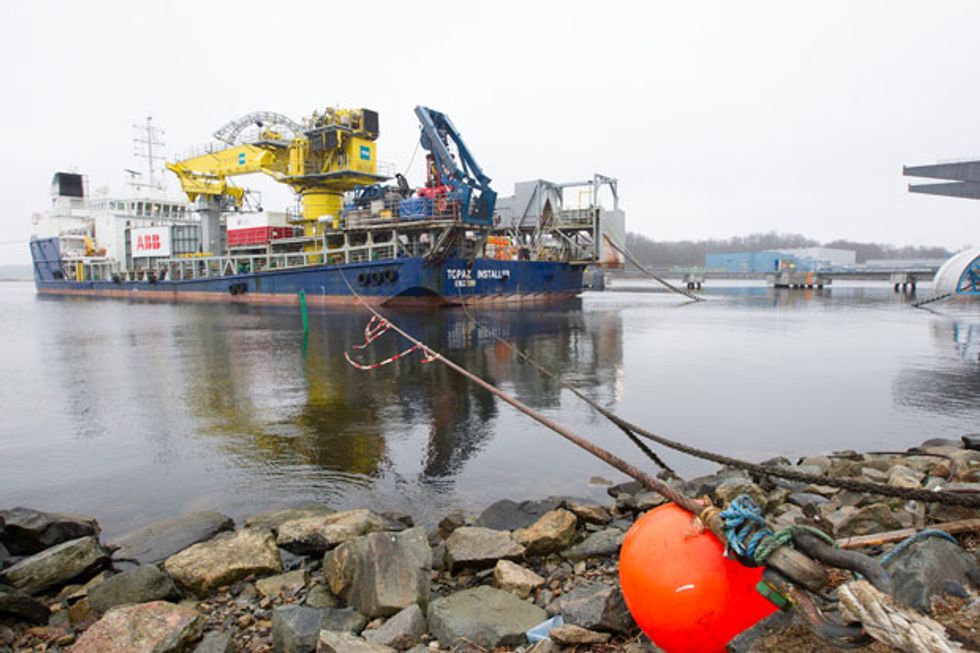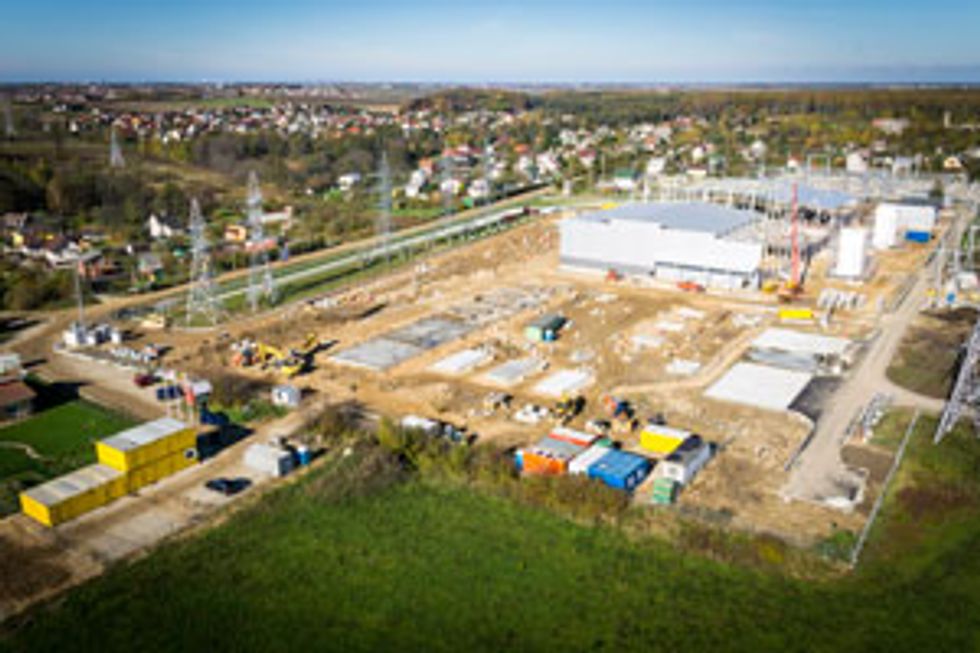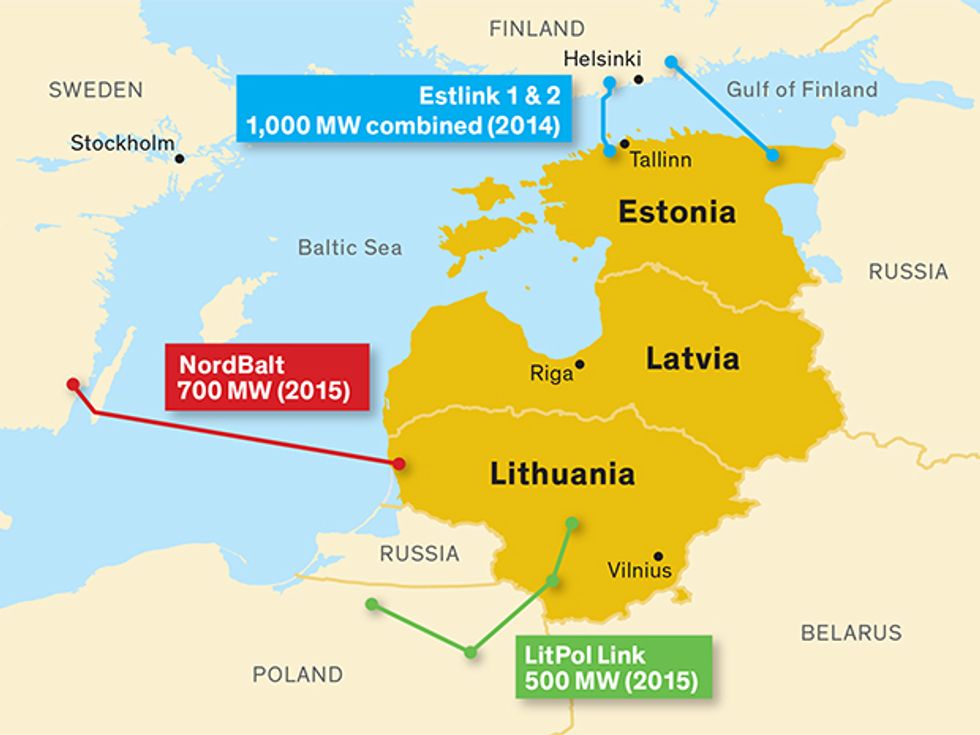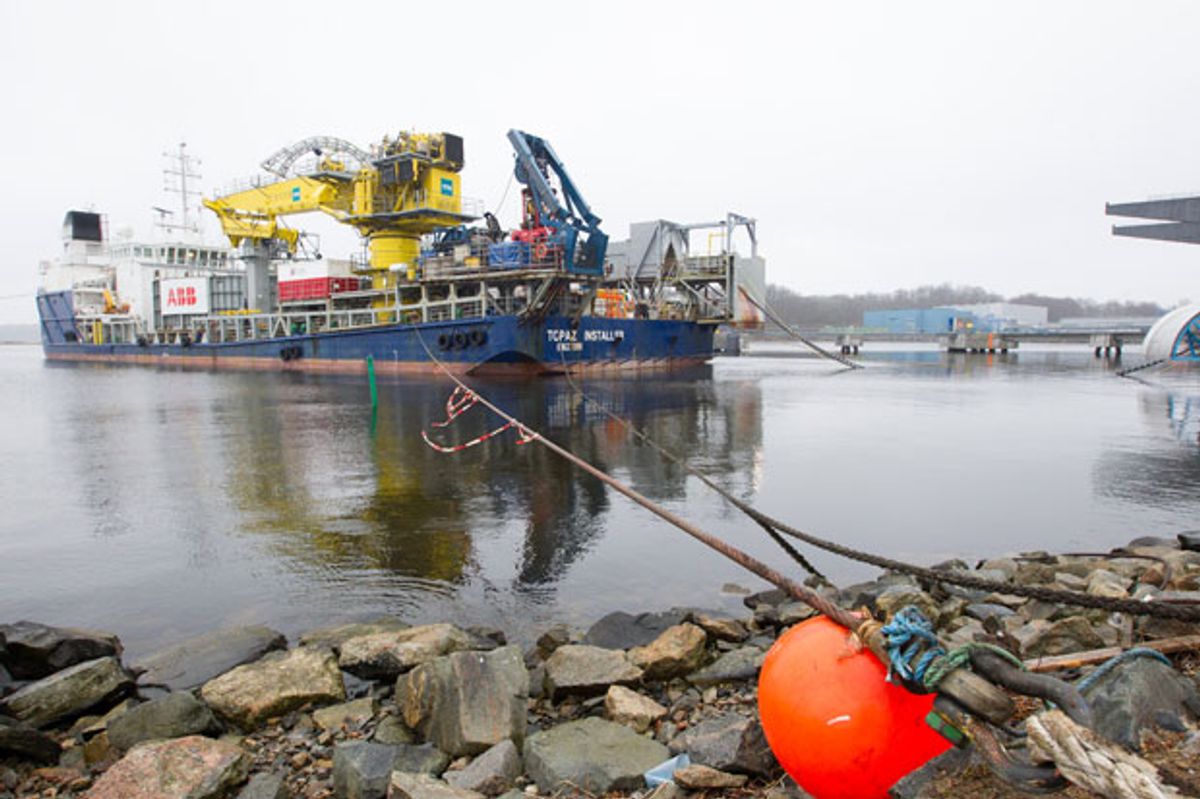
Former Soviet Union satellites such as Ukraine, Georgia, and the three Baltic states—Lithuania, Latvia, and Estonia—rely heavily on Russian energy, a dependence that colors the ongoing geopolitical tussle among the Russian Federation, the European Union, and NATO. But new energy infrastructure is beginning to free the Baltics from this drama, including two high-voltage direct current links to Lithuania nearing completion: the 500-megawatt LitPol Link with Poland and the 700-MW NordBalt cable to Sweden, which is among the world’s longest subsea power links.
The links will give the Baltics the ability to get 100 percent of their imported power from non-Russian sources. Laying the 453-kilometer NordBalt cable was hindered by a series of nerve-wracking interventions by Russian naval ships, prompting Lithuania to lodge an official complaint with Moscow. Despite this hurdle, both NordBalt and LitPol Link are expected to begin testing by December and should be in operation from January 2016, says Daivis Virbickas, CEO of the Lithuanian power grid operator Litgrid.
Virbickas says that LitPol Link and NordBalt represent a “new era” for Lithuania, the largest of the Baltic states. While Lithuania declared its political independence from the Soviet Union in 1990, it became more dependent on Russian energy after joining the EU in 2004, which required that it shut down the Ignalina nuclear power plant’s Chernobyl-style reactors.
Overnight, Lithuania went from being one of Europe’s major power exporters to heavy reliance on Russia. Since the closing of the last reactor, at the end of 2009, Lithuania has imported 70 percent of its power, roughly two-thirds of that from Russia. Its domestic power plants burn natural gas imported from Russia’s Gazprom. As a result, Lithuanians pay the highest energy prices in Europe.

Dependence also adds to the Baltics’ sense of insecurity, which has risen in recent years as the Russian Federation has invoked power plays on other energy clients such as Ukraine and Georgia. Ukraine, whose Crimean region Russia annexed last March, now relies on Russian power imports since separatist activity has disrupted supplies from its eastern coal mines.
NordBalt and LitPol Link are, to a great extent, products of Russia’s occupation of the Georgian region of South Ossetia in 2008. In 2009, the European Commission, the Baltic nations, and several neighboring states, including Sweden, forged a common action plan to end the Baltics’ energy isolation and to synchronize their power grids with Europe’s. That plan has been bankrolled by European financing.
Even though the lines aren’t yet energized, dependence on Russia is already fading in Lithuania. Virbickas says futures contracts for electricity are already 20 percent cheaper than they were last year, as traders factor in the impending availability of cheaper power from the EU and Scandinavia.
Natural gas options are also opening up. Last year Lithuania began operating the Baltic states’ first liquefied natural gas terminal, which is receiving Norwegian gas.

The Baltics are also taking steps to synchronize with Europe’s grid. Currently, the three countries’ grids form the western flank of a massive interconnection that spans eight time zones and is dominated by Russia’s power system. But earlier this year the Baltic transmission system operators hammered out a joint plan outlining how to desynchronize their AC grid from the Moscow-directed interconnection and synchronize it with Europe’s. The specified power line reinforcements and upgraded grid controls could take a decade to complete and could cost the Baltics €1 billion (approximately US $1.08 billion), according to Virbickas.
That may be more than the Baltics can earn back from a more fluid power market. But the cost and effort is justified, says Virbickas, because it will boost supply security. He expects Lithuania to be an equal partner in the cooperative management of continental Europe’s grid by the European Network of Transmission System Operators for Electricity, the Brussels-based consortium of European grid operators. In contrast, he says, the Baltic grid operators have little role in determining how the Russian grid is run.
One delicate question remains unanswered, however: the electrical fate of Kaliningrad, a Russian exclave that’s sandwiched between Poland and Lithuania. Discussions on whether Kaliningrad will become an electrical island or join the European grid ended with the breakdown in Russia-EU relations last year. “It is a difficult project geopolitically because we have Kaliningrad in between,” predicts Romas Švedas, formerly a Lithuanian diplomat and vice minister of energy. “It will be a lengthy process.”
Peter Fairley has been tracking energy technologies and their environmental implications globally for over two decades, charting engineering and policy innovations that could slash dependence on fossil fuels and the political forces fighting them. He has been a contributing editor with IEEE Spectrum since 2003.



